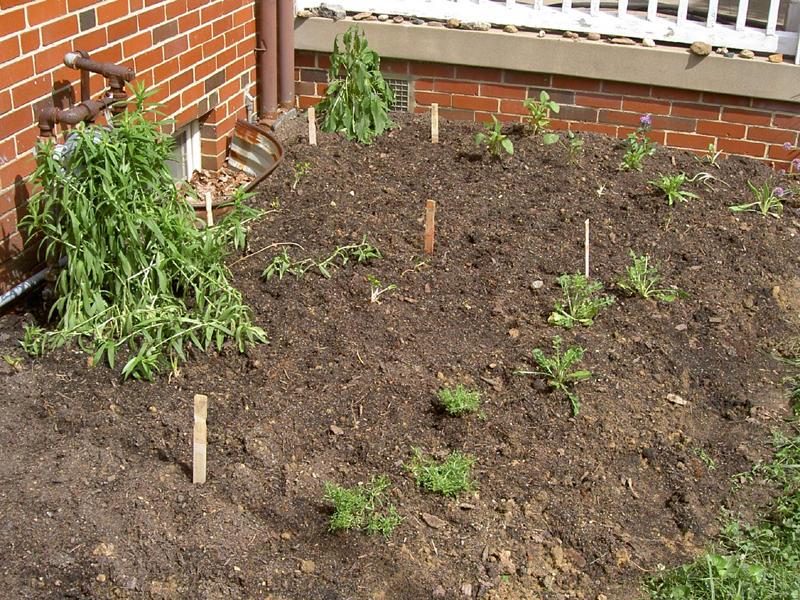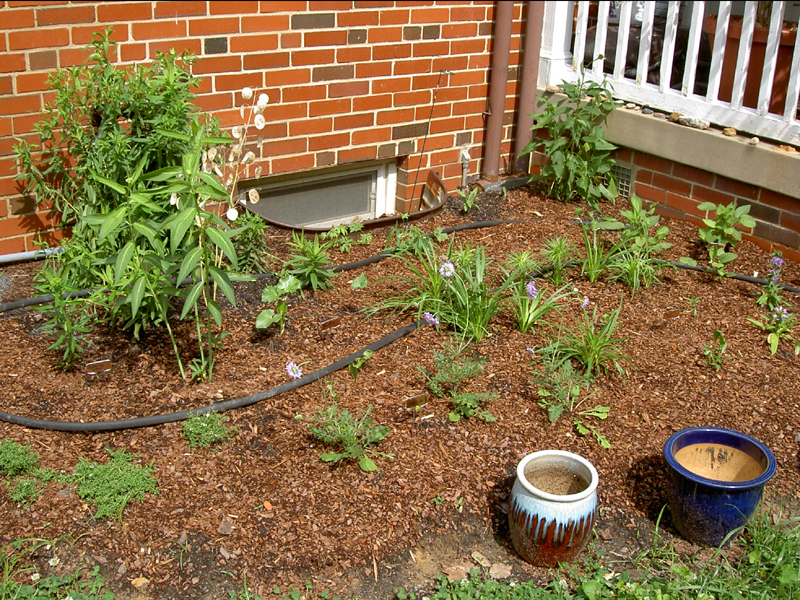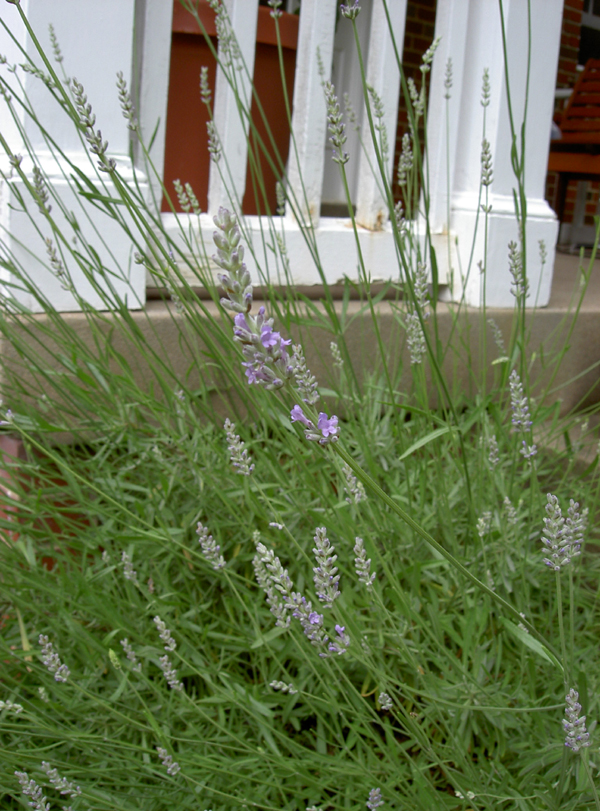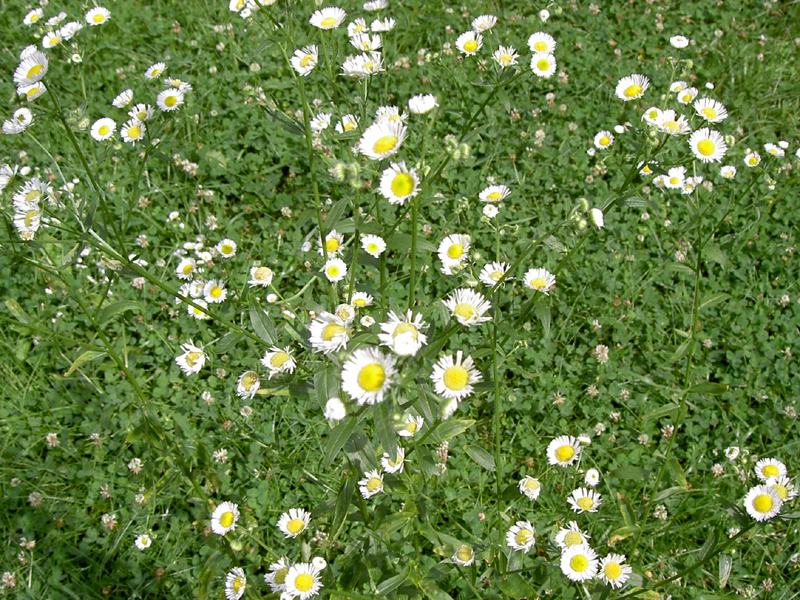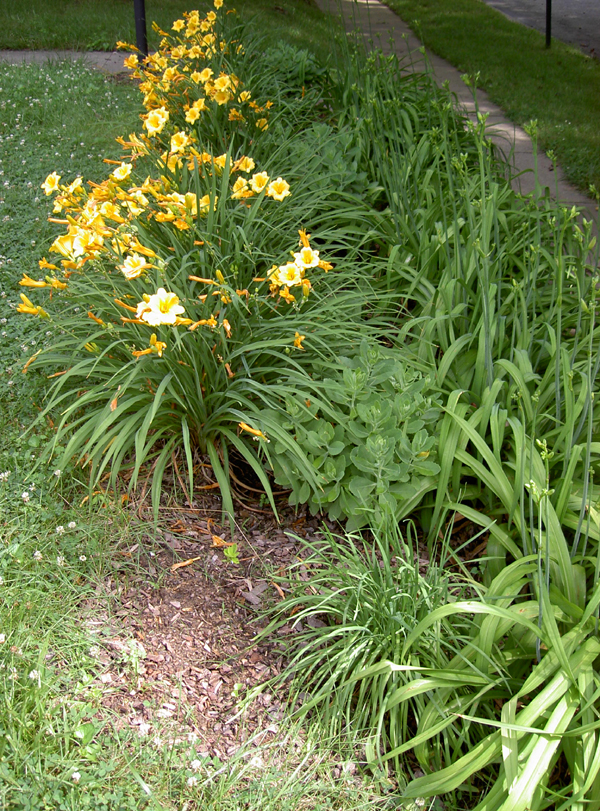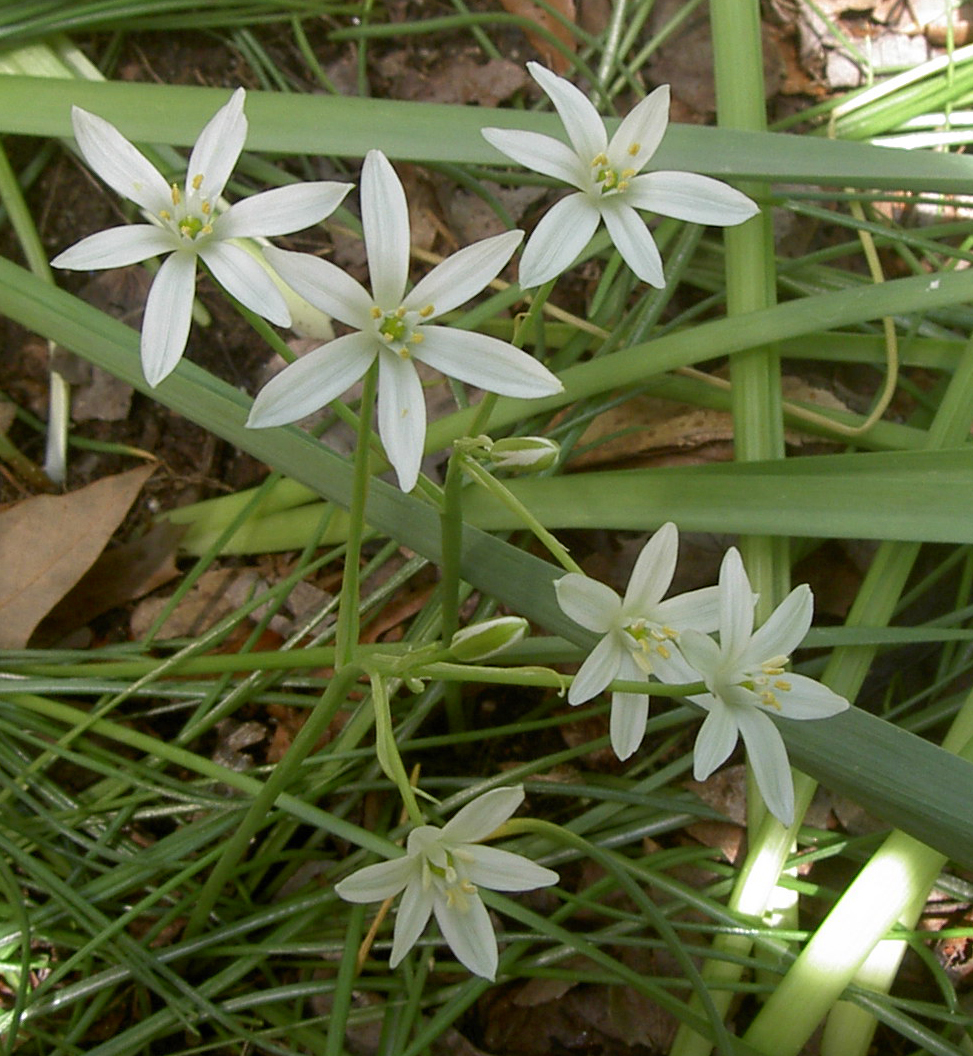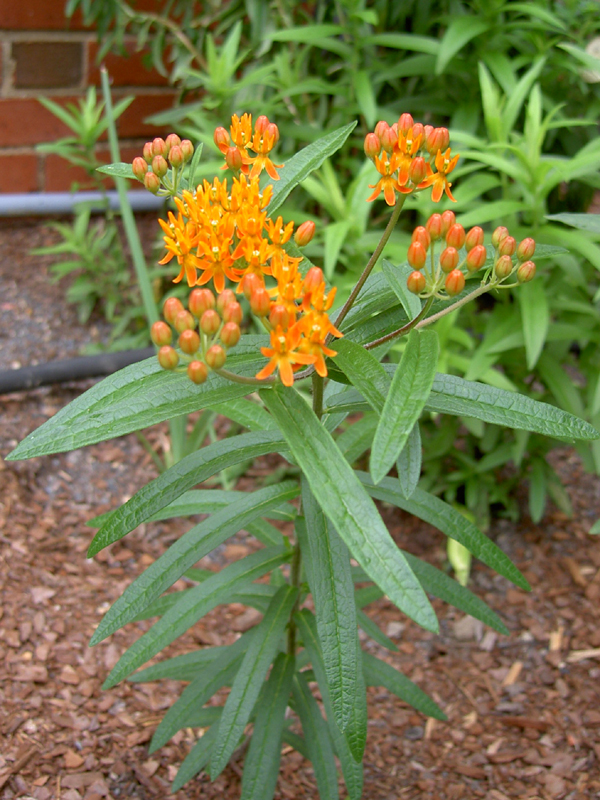
First of the Gay Butterflies Butterfly Weed assortment to bloom.
One of my goals in selecting plants to add to our garden is to attract more butterflies and predator insects. As with the desire to have more birds, it’s my hope that the mosquitoes can be kept to a minimum by natural predation. So far, we’ve seen some improvement over last year; it’s now possible to walk around in the yard and work in some areas without getting eaten alive. There are still a few problem areas, notably the puddle-ish area at the foot of the basement stairs (where we’re going to install a drain as part of the work on the basement) and the bumpy black plastic downspout extension on that same side of the addition. So, that corner of the yard is not so great. The rest is pretty good on a sunny day though, and even working outside at dusk I was able to make do with just the citronella bucket and not a DEET coating. Between our water management work, the birds, and the insects, we seem to be making progress.
In terms of butterflies, I’ve so far seen only the most common ones. They’ve appeared in greater numbers than I remember, Spring Azures and Cabbage Whites being the most frequent visitors. We had a larger black and blue butterfly hang around for a few days in the spring, however I wasn’t able to identify it. I’ve been using a poster that I picked up in Hilton Head, Butterflies of the Mid-Atlantic and Southeast, as a way to narrow down my options and then Peterson’s Eastern Butterflies or an online guide to our county to confirm the identifications. In addition to the two common white butterflies, I’ve noted several Eastern Tailed-blues in the yard, and caught visits by a Clouded Sulphur and what I believe was a Hobomok Skipper.
During trips farther south, I’ve seen a few other species. During our bi-annual farm party we saw a large number of Cloudless Sulphurs grouped along a puddled lane. We also spotted a Tiger Swallowtail and a variety of small and medium orange-and-black butterflies that were just too fast for us to identify. Similarly, we spotted a large orange butterfly that looked like a Great Spangled Fritillary during an outside wedding last weekend, but had neither binoculars nor book at hand. I’ve seen orange butterflies in our yard, but haven’t been quick enough to get a good look at them. I’m hoping that once the flowers start coming into bloom I’ll start to be able to get a good look at them at rest.
